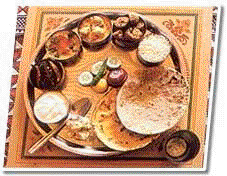 Ayurveda is the oldest form of healthcare in the world, which originated in India thousands of years ago. Ayur means life and Veda means science or knowledge. According to the ancient Ayurveda scholar Charaka, “ayu” comprises the mind, body, senses and the soul.
Ayurveda is the oldest form of healthcare in the world, which originated in India thousands of years ago. Ayur means life and Veda means science or knowledge. According to the ancient Ayurveda scholar Charaka, “ayu” comprises the mind, body, senses and the soul.
The knowledge of Ayurveda was received by Dhanvantari from Lord Brahma and then later spread. Ayurveda is found in the ancient Rig Veda and Atharva Veda, containing a series of prescriptions that can help humans overcome various ailments. The principal early texts on Ayurveda include the Dhanvantri Nighantu, Sushruta Samhita, and Charaka Samhita. Cataract surgery is mentioned in the Sushruta Samhita, as a procedure to be performed with a curved needle used to loosen and push out the obstruction from the field of vision. The eye would later be soaked with warm ghee and bandaged. 6th century CE Chinese pilgrim Fa Hsien also described the institutional approach of Indian medicine.
Ayurveda is extremely logical and clear in its approach. Ayurveda’s objective is not to suppress a particular symptom but to restore balance in our body. Ayurveda aims to restore health by working on the underlying causes of the disease, considering the state of the body and behavioural signs like attitude and conduct. Therefore, the practice of Yoga, meditation and awareness towards one’s conduct are an integral part of Ayurvedic treatment.
Balancing the 3 dosha-s in Ayurveda
A healthy person is defined in Sushruta Samhita as “he whose doshas are in balance, appetite is good, all tissues of the body and all natural urges are functioning properly, and whose mind, body and spirit are cheerful (and in perfect equilibrium).” The tri-dosha-s of our body are the bio-energies of our body viz. vata, pitta and kapha, which are based on the 5 primary elements of nature.
Vata pertains to air and ether elements. This energy is generally seen as the force, which directs nerve impulses, circulation, respiration, and elimination. As per Sri Sri Ayurveda, foods to avoid for people with vata disorders are Rajma, Chole, Chana, dry peas, chana flour. Person must avoid air-cooled places.
Kapha pertains to water and earth elements. Kapha is responsible for growth and protection. The mucous lining of the stomach, and the cerebral-spinal fluid that protects the brain and spinal column are examples of kapha. Foods to avoid for kapha disorders are curd, butter, cheese, paneer, ice cream and sweets. Person must avoid irregular sleeping habits.
Pitta pertains to the fire element. This dosha governs metabolism of food and metabolism in the organ and tissue systems. Foods to avoid for people with pitta disorders are bread, pizza, fried food, pickles and spicy food. Person must avoid fasting, late nights and walking in the heat.
Impairment of the dosha-s and other factors can differ in patients even when they may have the same disease. Since Ayurveda aims at balancing the imbalanced factors, its medicinal treatment and the recommended lifestyle including food and exercises can differ from patient to patient.
Ayurveda uses natural herbs to try and get rid of disease permanently from its roots. India has 6,600 indigenous herbal plants found in the Himalayan region, along its coastline, deserts and rainforest ecosystem. This ancient science aims to boost the body’s immunity, to prevent getting affected by all types of diseases.
If toxins in the body are abundant, then a cleansing process known as ‘panchakarma’ is done to purge these unwanted toxins. This five-fold purification therapy consists of the following:
- Therapeutic vomiting (Vaman)
- Purgation (Virechan)
- Enema (Basti)
- Elimination of toxins through the nose (Nasya)
- Detoxification of the blood (Rakta moksha)
Unlike allopathic medicines, side effects are rare in Ayurveda. Even if it occurs it might be due to your body’s intolerance to some types of herbs and minerals, or if you are not following the diet and lifestyle advice as per instructions.
 Indian cuisine
Indian cuisine
Indian food is the most varied compared to anywhere else in the world. You can eat a different Indian dish everyday, but still not repeat it for an entire year! Indian food is as diverse as its culture, its religions, geography, climatic conditions and traditions. It is the different combination of spices (not always hot) that produce the most delectable dishes in the world. Every single ingredient of an Indian dish is there with a purpose and compliments each other. In fact, the succession of dishes also keeps in mind the flavour and ‘nature’ of the spices, whether hot or cool. Some of the commonly used ingredients in Indian food are: chilli (hot fiery red or green); coconut; garlic; ginger; basil, coriander (cilantro), mint and parsley; fenugreek (methi); saunf; garam masala; mustard seeds; tamarind (imli); saffron (kesar); rose water (gulkand), etc.
The character of cuisine in India is essentially regional, depending on the local climate including:
- North Indians eat ‘roti’ or ‘chappatis’ or ‘parathas’ with ‘curries’, which include spicy vegetables and lentils.
- The cuisine of western India is generally vegetarian and spicy. Maharashtrian food offers a variety of crunchy crisp snacks like the ‘vada pav’, ‘misal’ and ‘pav bhaji’.
- Eastern India is close to the sea and gets plenty of rain. Hence rice and fish are staple all over here. The other good thing of the eastern cuisine (Bengali) are their delicate sweets.
- Rice is served everywhere in South India. The south Indians use various spices to make mouth-watering dishes like dosas and idlis, served with sambar.

